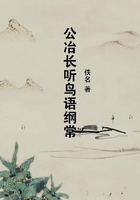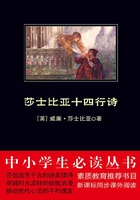A clear, non-technical discussion of the basis of all industrial progress is "Power", by Charles E.Lucke (1911), which discusses the general principle of the substitution of power for the labor of men.Many of the references given in "Colonial Folkways", by C.M.Andrews ("The Chronicles of America", vol.IX), are valuable for an understanding of early industrial conditions.The general course of industry and commerce in the United States is briefly told by Carroll D.Wright in "The Industrial Evolution of the United States" (1907), by E.L.Bogart in "The Economic History of the United States" (1920), and by Katharine Coman in "The Industrial History of the United States" (1911)."ADocumentary History of American Industrial Society", 10 vols.
(1910-11), edited by John R.Commons, is a mine of material.See also Emerson D.Fite, "Social and Industrial Conditions in the North During the Civil War" (1910).The best account of the inventions of the nineteenth century is "The Progress of Invention in the Nineteenth Century" by Edward W.Byrn (1900).
George Iles in "Leading American Inventors" (1912) tells the story of several important inventors and their work.The same author in "Flame, Electricity and the Camera" (1900) gives much valuable information.
CHAPTER I
The primary source of information on Benjamin Franklin is contained in his own writings.These were compiled and edited by Jared Sparks, "The Works of...Franklin...with Notes and a Life of the Author", 10 vols.(1836-40); and later by John Bigelow, "The Complete Works of Benjamin Franklin; including His Private as well as His Official and Scientific Correspondence, and Numerous Letters and Documents Now for the First Time Printed, with Many Others not included in Any Former Collection, also, the Unmutilated and Correct Version of His Autobiography", 10 vols.(1887-88).Consult also James Parton, "The Life and Times of Benjamin Franklin", 2 vols.(1864); S.G.Fisher, "The True Benjamin Franklin" (1899); Paul Leicester Ford, "The Many-Sided Franklin" (1899); John T.Morse, "Benjamin Franklin"(1889) in the "American Statesmen" series; and Lindsay Swift, "Benjamin Franklin" (1910) in "Beacon Biographies.On the Patent Office: Henry L.Ellsworth, A Digest of Patents Issued by the United States from 1790 to January 1, 1839" (Washington, 1840);also the regular Reports and publications of the United States Patent Office.
CHAPTER II
The first life of Eli Whitney is the "Memoir" by Denison Olmsted (1846), and a collection of Whitney's letters about the cotton gin may be found in "The American Historical Review", vol.III(1897)."Eli Whitney and His Cotton Gin," by M.F.Foster, is included in the "Transactions of the New England Cotton Manufacturers' Association", no.67 (October, 1899).See also Dwight Goddard, "A Short Story of Eli Whitney" (1904); D.A.
Tompkins, "Cotton and Cotton Oil" (1901); James A.B.Scherer, "Cotton as a World Power" (1916); E.C.Bates, "The Story of the Cotton Gin" (1899), reprinted from "The New England Magazine", May, 1890; and Eugene Clyde Brooks, "The Story of Cotton and the Development of the Cotton States" (1911).
CHAPTER III
For an account of James Watt's achievements, see J.Cleland, "Historical Account of the Steam Engine" (1825) and John W.
Grant, "Watt and the Steam Age" (1917).On Fulton: R.H.
Thurston, "Robert Fulton" (1891) in the "Makers of America"series; A.C.Sutcliffe, "Robert Fulton and the 'Clermont'"(1909); H.W.Dickinson, "Robert Fulton, Engineer and Artist; His Life and Works" (1913).For an account of John Stevens, see George Iles, "Leading American Inventors" (1912), and Dwight Goddard, "A Short Story of John Stevens and His Sons in Eminent Engineers" (1905).See also John Stevens, "Documents Tending to Prove the Superior Advantages of Rail-Ways and Steam-Carriages over Canal Navigation" (1819.), reprinted in "The Magazine of History with Notes and Queries", Extra Number 54 (1917).On Evans: "Oliver Evans and His Inventions," by Coleman Sellers, in "The Journal of the Franklin Institute", July, 1886, vol.CXXII.
CHAPTER IV
On the general subject of cotton manufacture and machinery, see:
J.L.Bishop, "History of American Manufactures from 1608 to 1860", 3 vols.(1864-67); Samuel Batchelder, "Introduction and Early Progress of the Cotton Manufacture in the United States"(1863); James Montgomery, "A Practical Detail of the Cotton Manufacture of the United States of America" (1840); Melvin T.
Copeland, "The Cotton Manufacturing Industry of the United States" (1912); and John L.Hayes, "American Textile Machinery"(1879).Harriet H.Robinson, "Loom and Spindle" (1898), is a description of the life of girl workers in the early factories written by one of them.Charles Dickens, "American Notes", Chapter IV, is a vivid account of the life in the Lowell mills.
See also Nathan Appleton, "Introduction of the Power Loom and Origin of Lowell" (1858); H.A.Miles, "Lowell, as It Was, and as It Is" (1845), and G.S.White, "Memoir of Samuel Slater" (1836).
On Elias Howe, see Dwight Goddard, "A Short Story of Elias Howe in Eminent Engineers" (1905).
CHAPTER V
The story of the reaper is told in: Herbert N.Casson, "Cyrus Hall McCormick; His Life and Work" (1909), and "The Romance of the Reaper" (1908), and Merritt F.Miller, "Evolution of Reaping Machines" (1902), U.S.Experiment Stations Office, Bulletin 103.
Other farm inventions are covered in: William Macdonald, "Makers of Modern Agriculture" (1913); Emile Guarini, "The Use of Electric Power in Plowing" in The "Electrical Review", vol.


